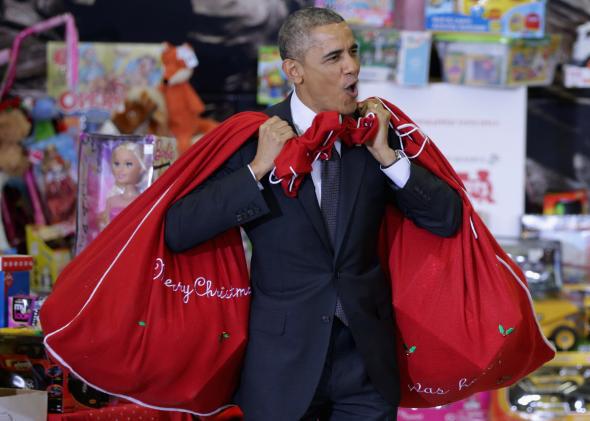Politco’s Michael Grunwald had a nifty scoop today, which ran under the slightly excessive headline, “The College Loan Bombshell Hidden in the Budget.” (One imagines dazed think-tank employees covered in bruises and shrapnel wounds.) Thanks to some recent executive actions by President Obama aimed at helping undergrads manage their education debt, the federal student lending program is going to earn nearly $22 billion less than previously projected. That’s a pretty big number. Grunwald points out that it would increase the deficit by 5 percent this year. And the figures were hidden away in an obscure appendix spreadsheet that most sane people, including reporters, would probably gloss over while wondering what karmic sin they had committed in a past life to merit such boredom.
So, it’s an interesting find. But should anybody be upset?
That depends. President Obama is essentially helping lots of student borrowers switch into more lenient repayment plans, and as a result, the government will make less money on its old loans. If you focus on the deficit and the deficit alone, then yeah, this story looks kind of bad. But if you focus on the fact that the White House found a way to provide billions in student loan relief without asking permission from Congress then, well, it’s kind of impressive.
This is largely a story about the weird world of federal budget math. When the government wants to figure out how much money it’s making off of student lending, it doesn’t just add up the money flowing in and out of the Treasury annually. Instead, it looks at all of the new loans that the Department of Education has made in a given year, and essentially tries to project how much they’ll return (or lose) over the lifetime of the debt. So when you read an article that says something like, “The Obama administration is forecast to turn a record $51 billion profit this year from student loan borrowers,” it really means that Washington’s budgeteers have looked deep into their crystal spreadsheets and concluded that all of this year’s new loans will earn about $51 billion.
There are very good, rational reasons why the process works this way. But it obviously involves a lot of guesswork about the future. That’s why, each year at budget time, the White House has to re-estimate the cost of federal student loans (as well as its various other credit programs). Usually, those tweaks are fairly small. But this time, they were worth about $22 billion. As far as the White House knows, it’s the largest re-estimate since 1992, when today’s budget rules for credit programs kicked in.
For that, we can thank President Obama’s recent efforts to expand the Department of Education’s Pay as You Earn program, which caps student loan payments at 10 percent of disposable income and forgives the debt after 20 years. The plan, which Obama signed into law in 2010, was more generous than the old income-based repayment option. But borrowers with older debt weren’t eligible, and in general, the program was poorly publicized, which left it bizarrely underused. In recent years, Obama has tried to fix those issues using the power of his pen. In 2013, he told the Department of Education to contact troubled borrowers to make sure they understood all of their payment options. Then last June, the president signed an executive action expanding eligibility for Pay as You Earn to about 5 million more people.
If you’re worried about the epidemic of student loan defaults in this country, these are all pretty positive developments. Borrowers are switching to payment plans that help them handle their debt and write off their loans after a reasonable period of time. But those forgiving terms are also less lucrative for the government than standard payment options. The White House Office of Management and Budget told me that it thinks Obama’s executive action expanding eligibility for Pay as You Earn will cost the feds about $9 billion, while the administration’s outreach efforts will cost another $15 billion as more people opt into the program. The grand total: $24 billion. The final re-estimate comes out to just under $22 billion, however, thanks to some changed assumptions about the economy and interest rates.
Grunwald calls this “a big quasi-bailout”—which is fair in a way. Obama has theoretically handed a big chunk of change back to student borrowers without asking permission from Congress (neat trick, huh?). You can call that a bailout if you want. On the other hand, I’m not sure it’s really much to get worked up about. These dollars are being subtracted from the value of every single outstanding federal student loan at once. In other words, it’s basically a one-time charge; it’s not like we’ll be spending an additional $22 billion every year from now on. Thanks to Obama’s actions, student lending will probably be a little less profitable in the future.1 But some might argue that’s a good thing.
Footnote1: Conservatives tend to argue that student loan profits are a complete illusion created by bad accounting standards. There is not enough room in this piece to rehash that entire argument.
